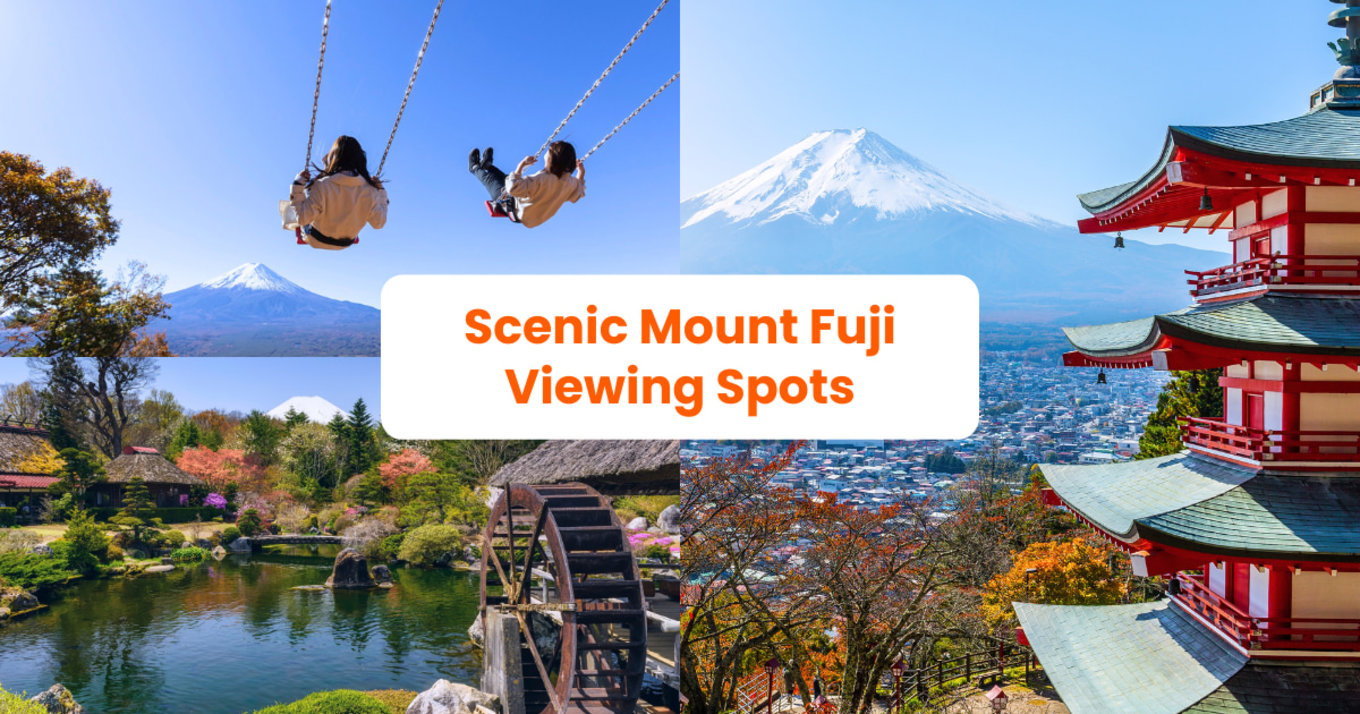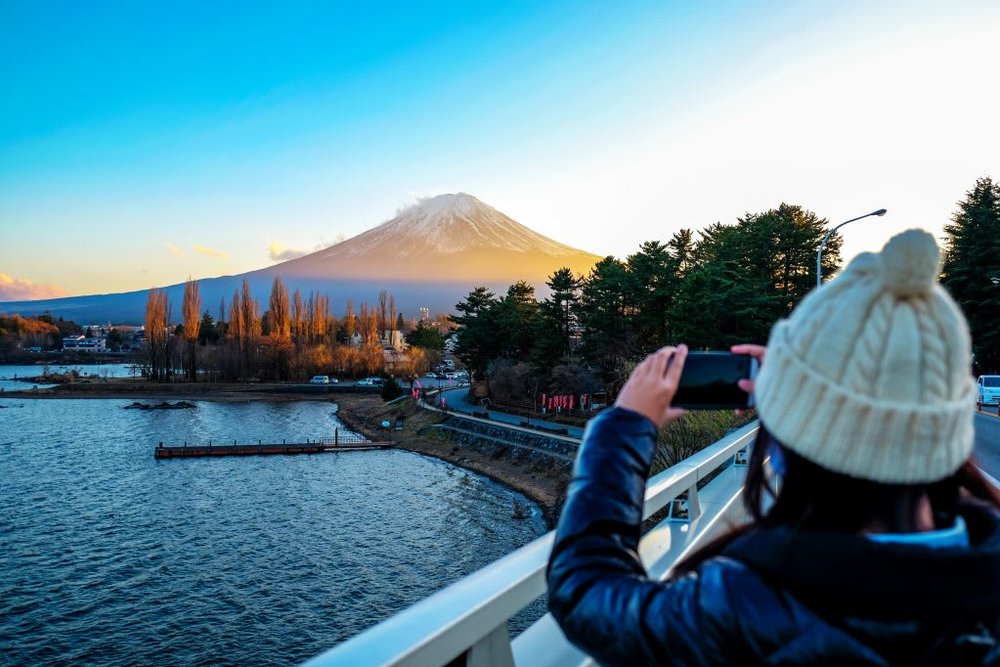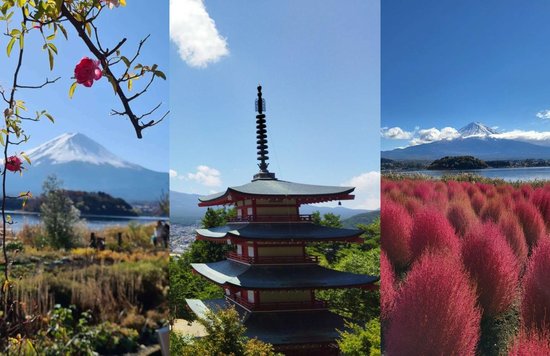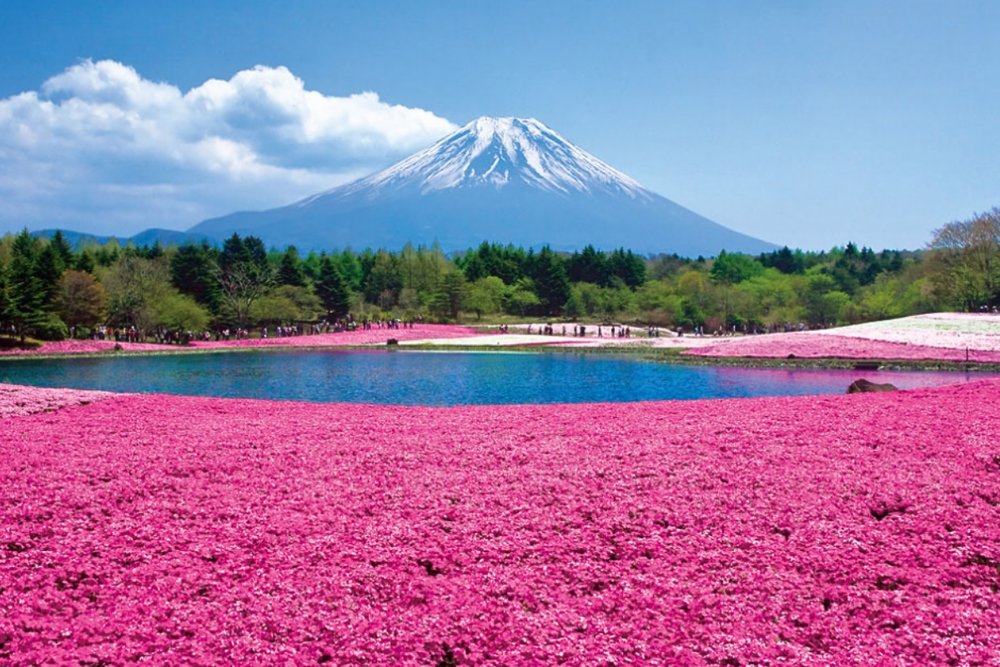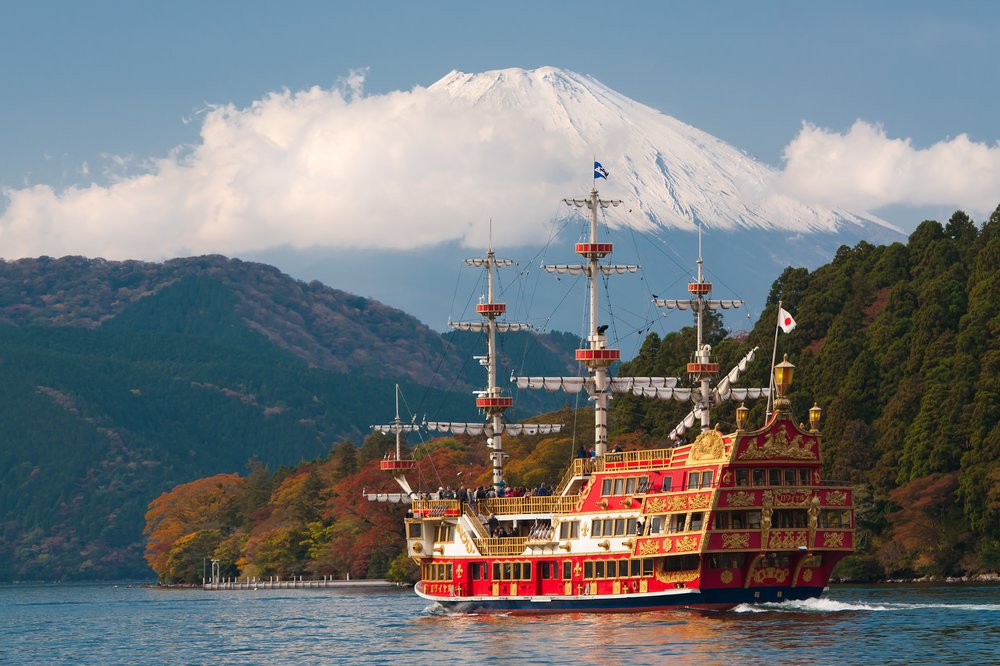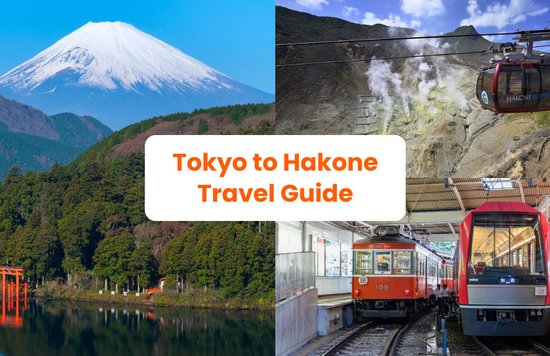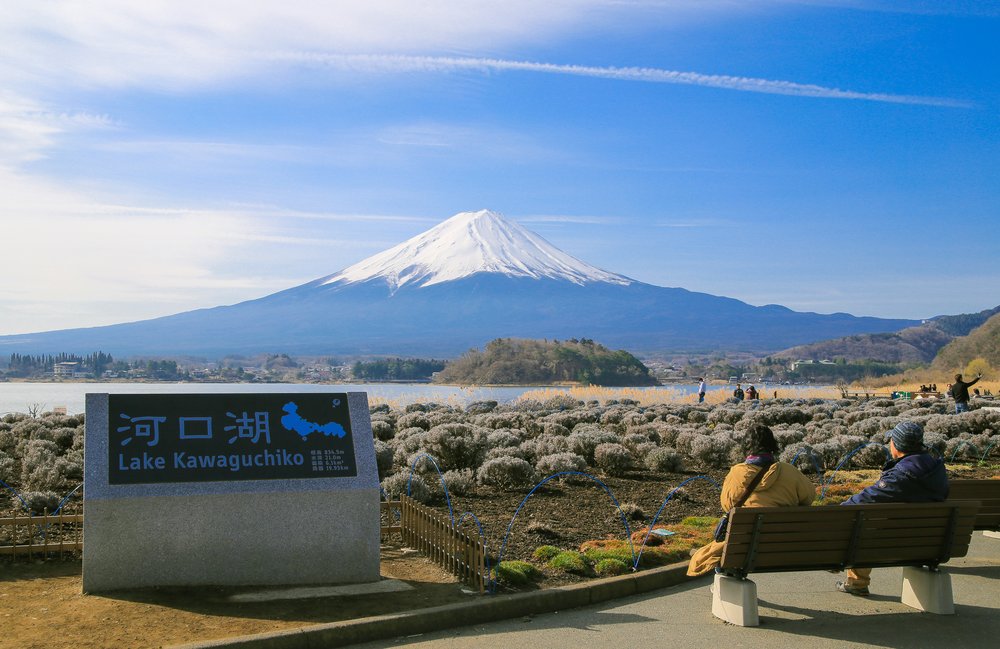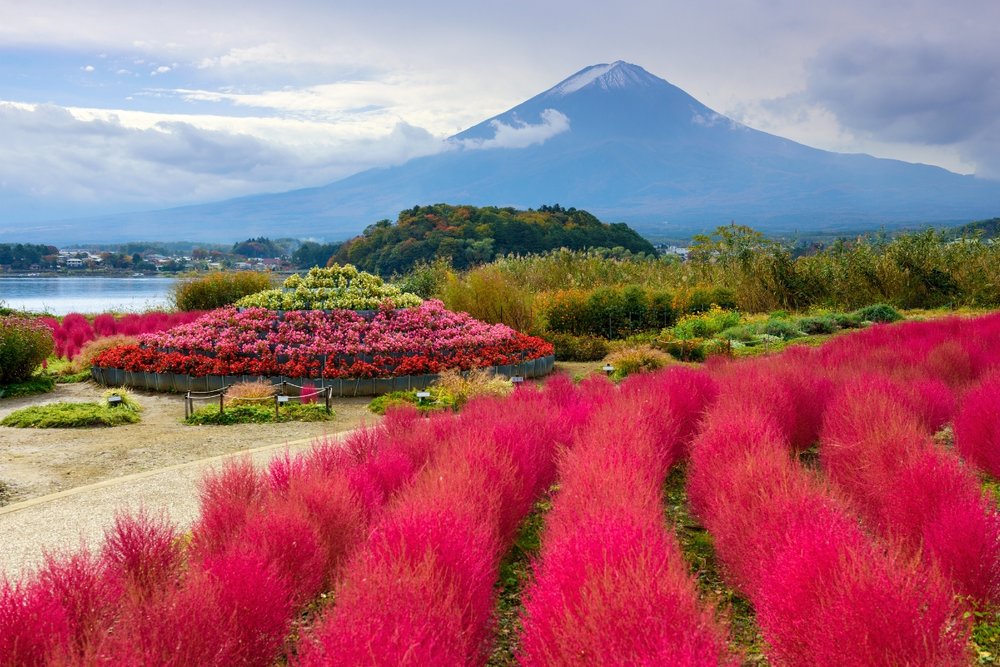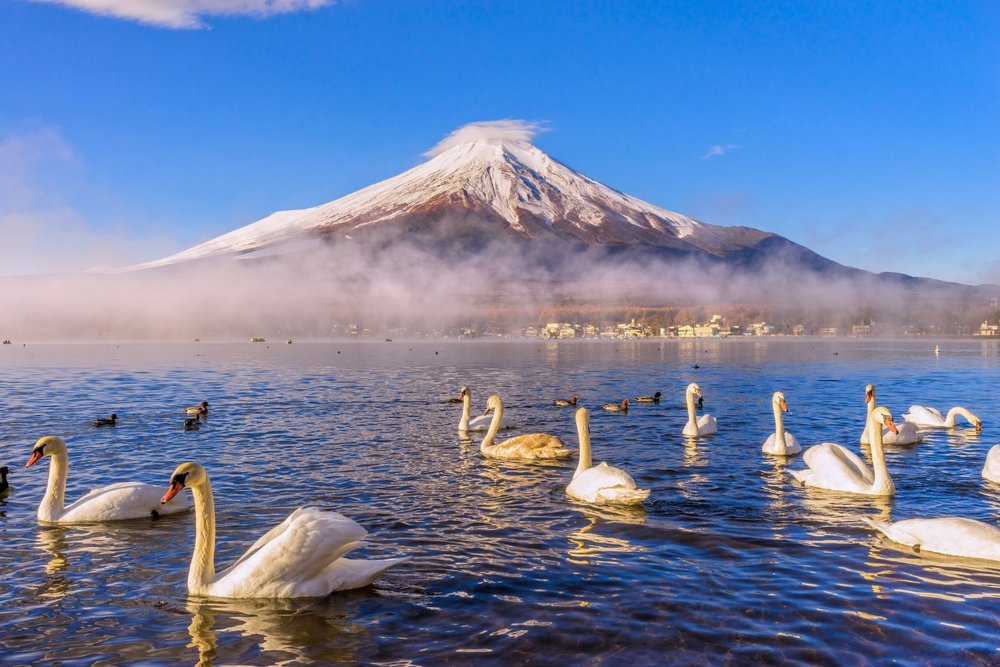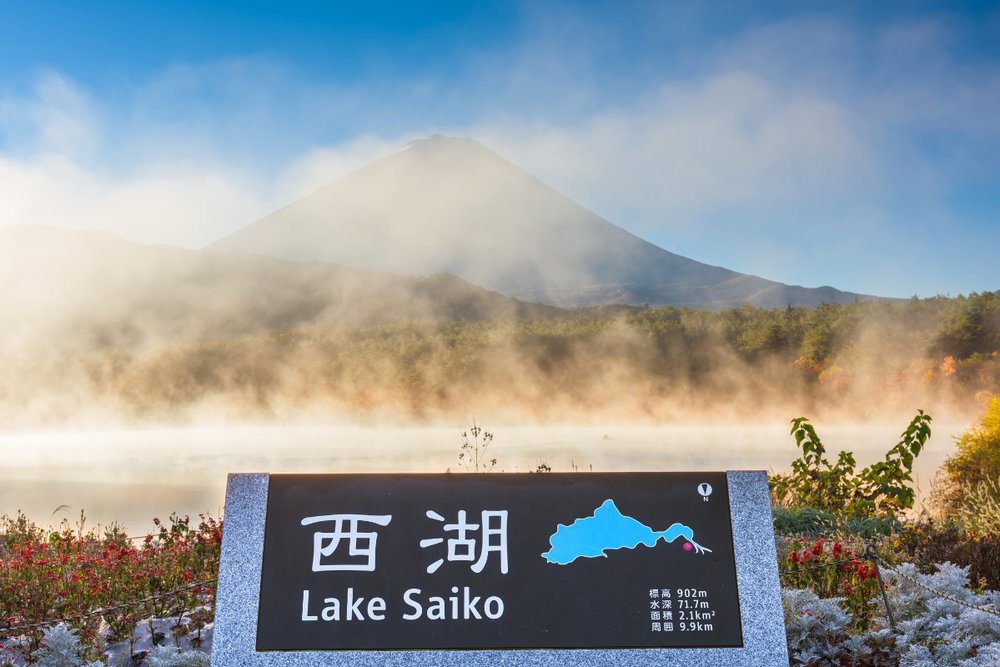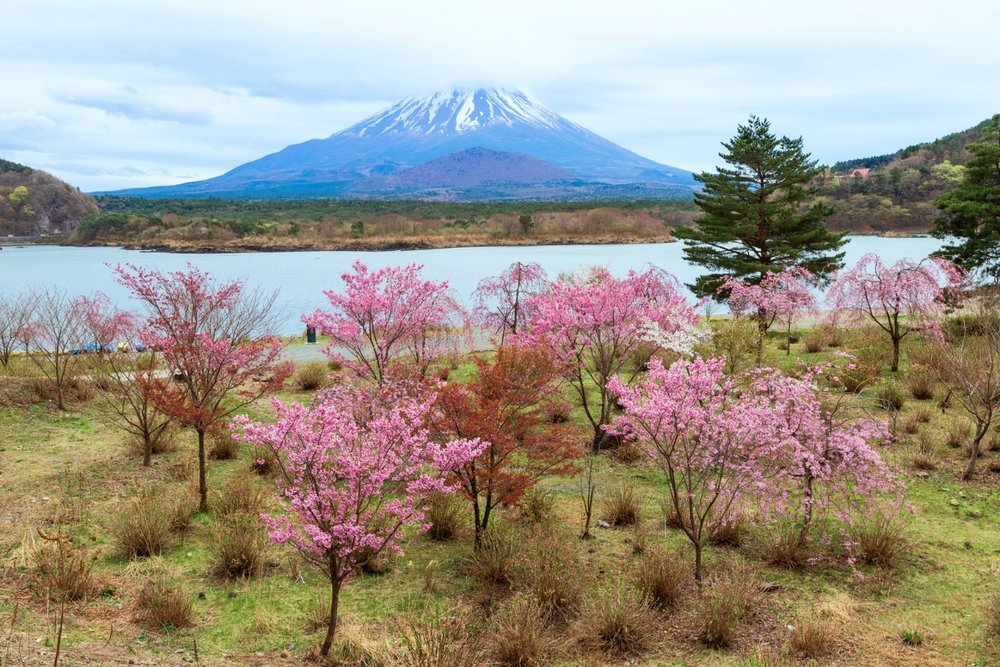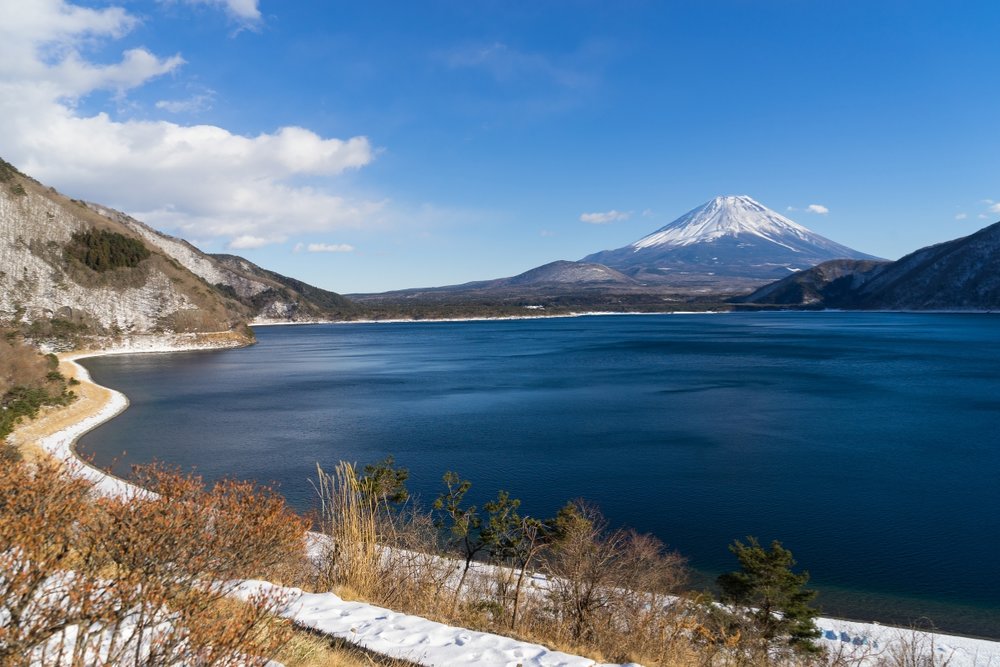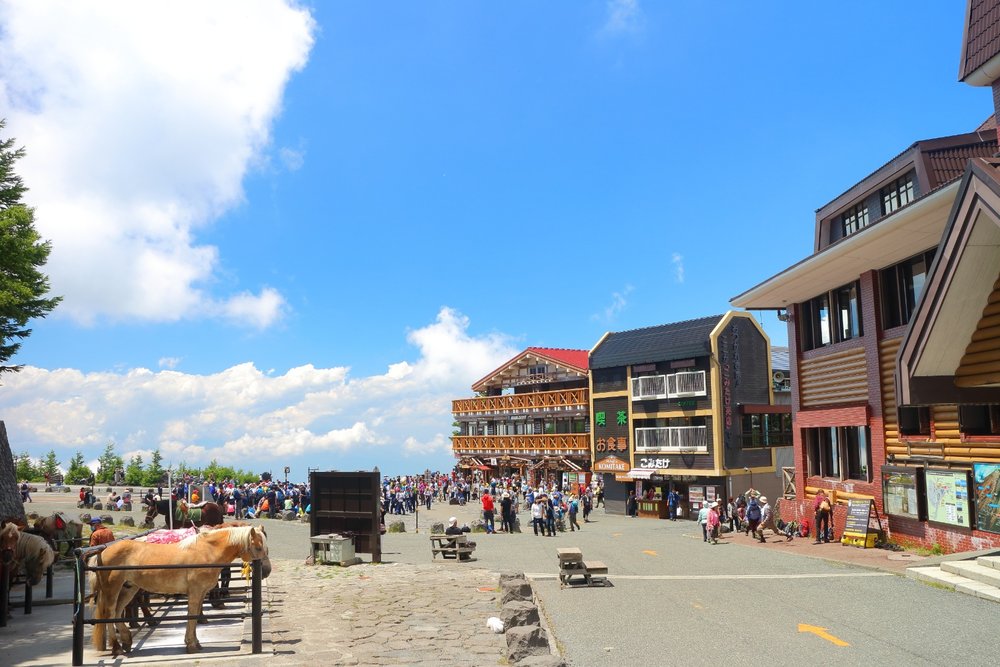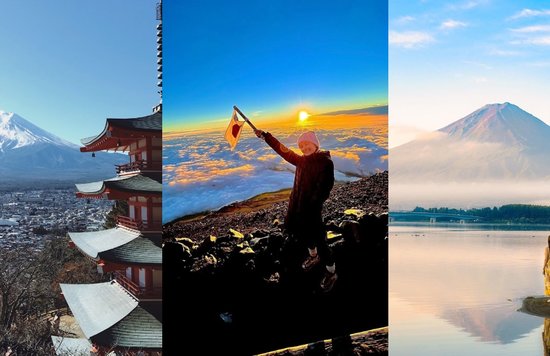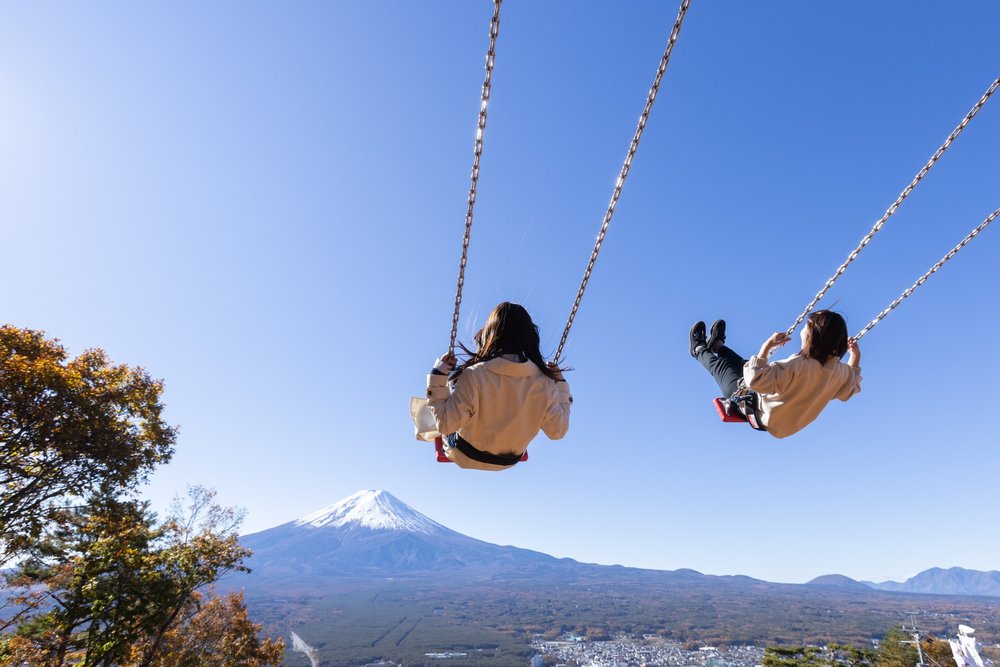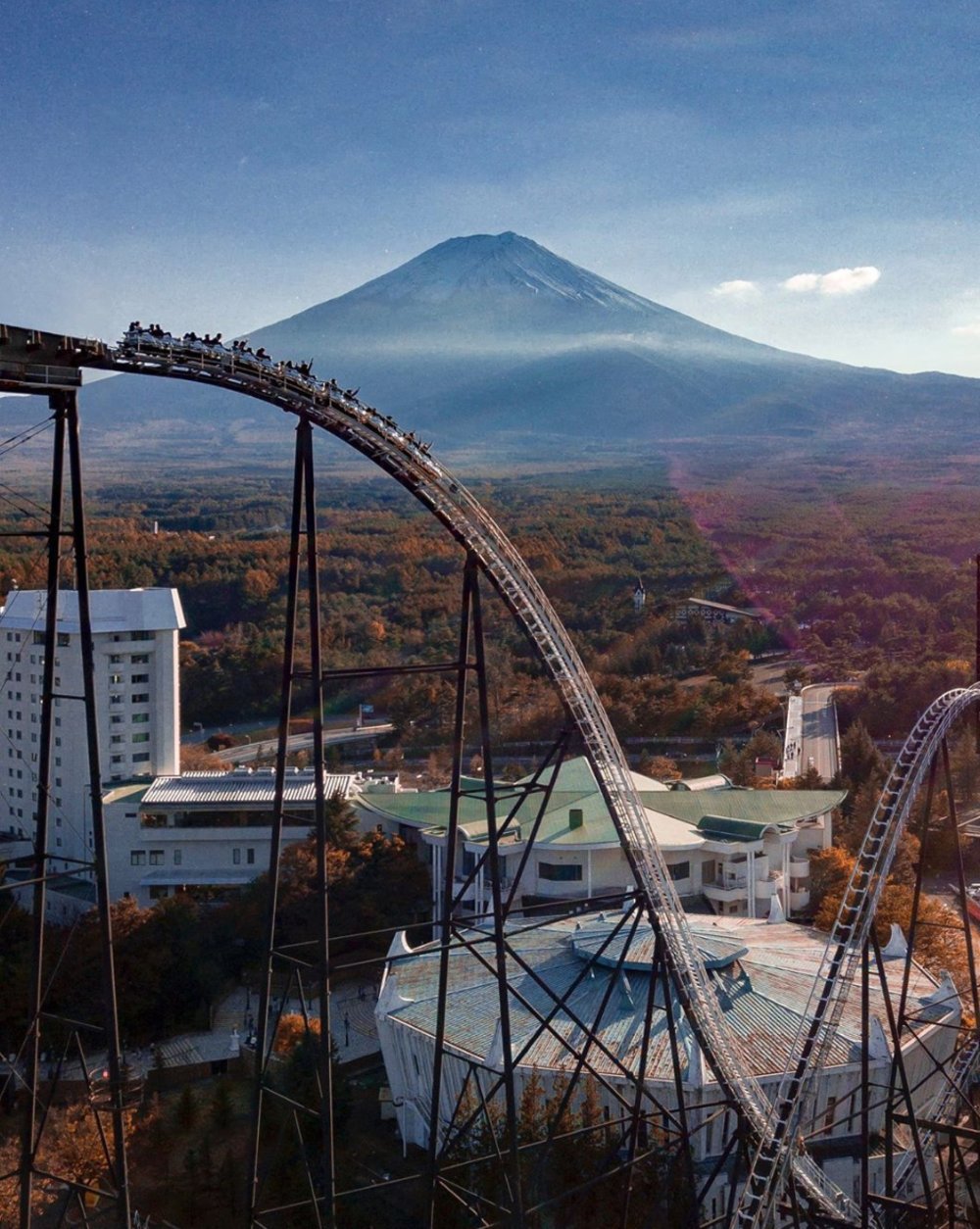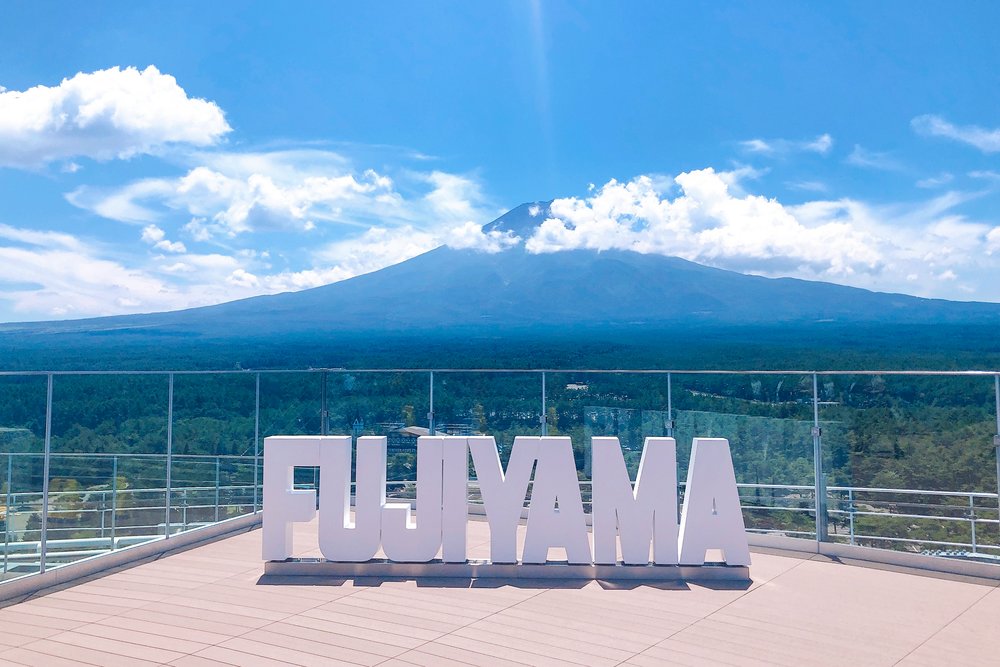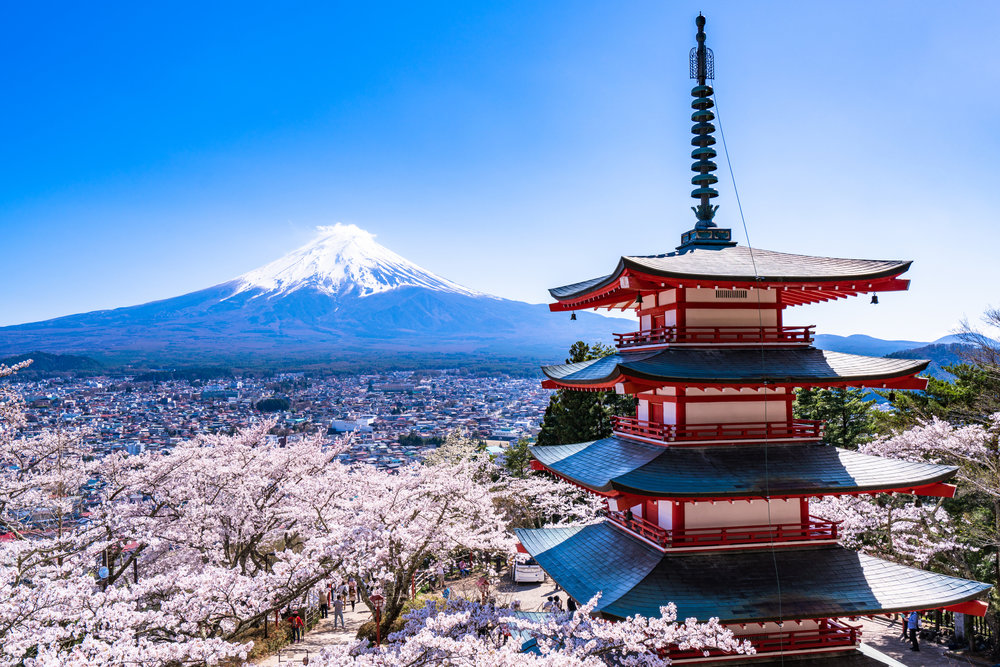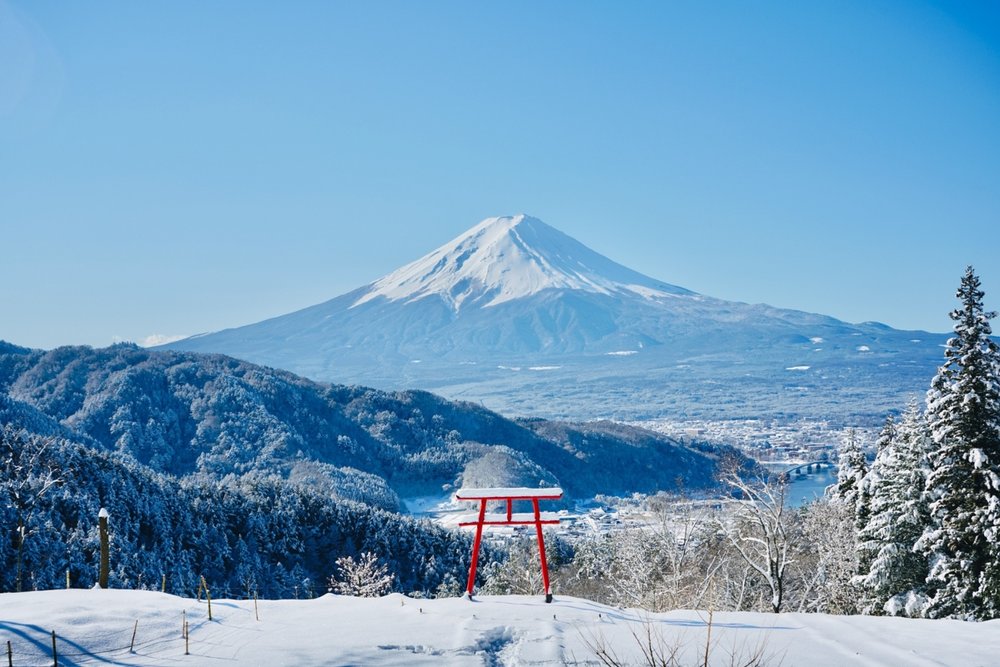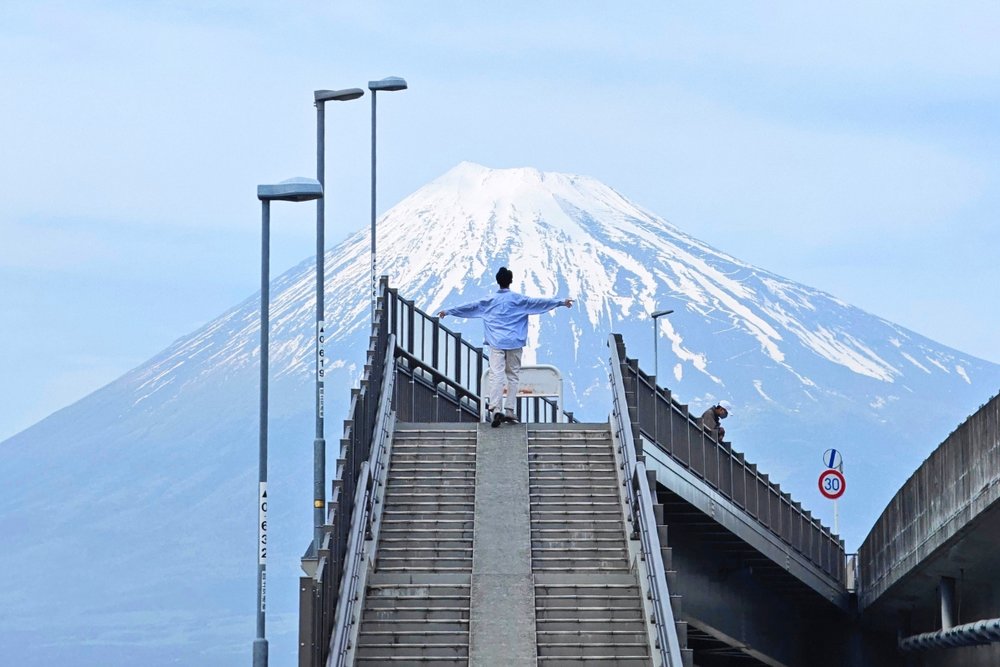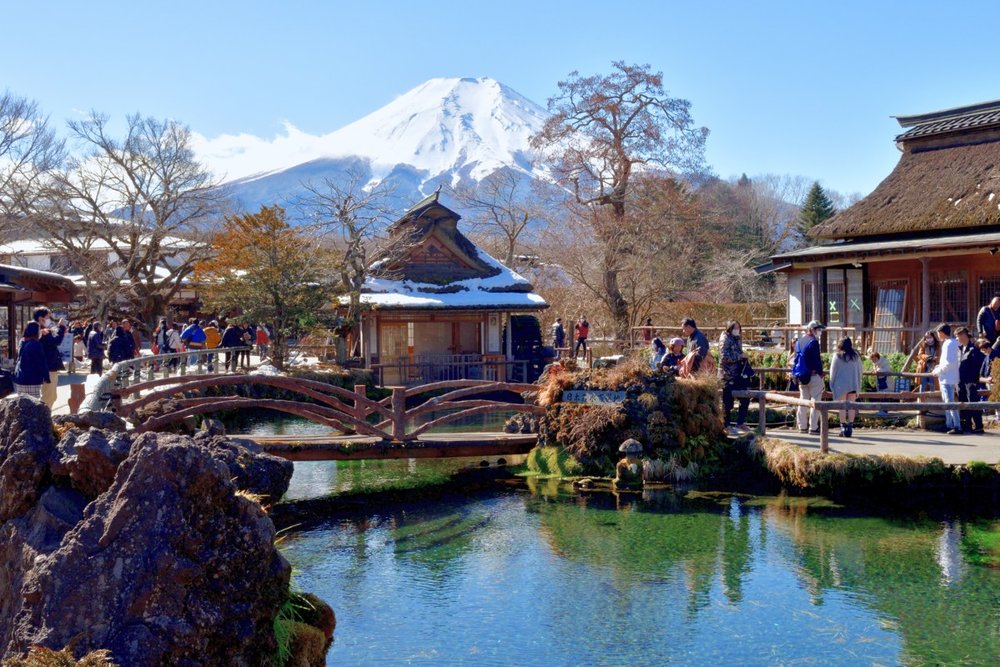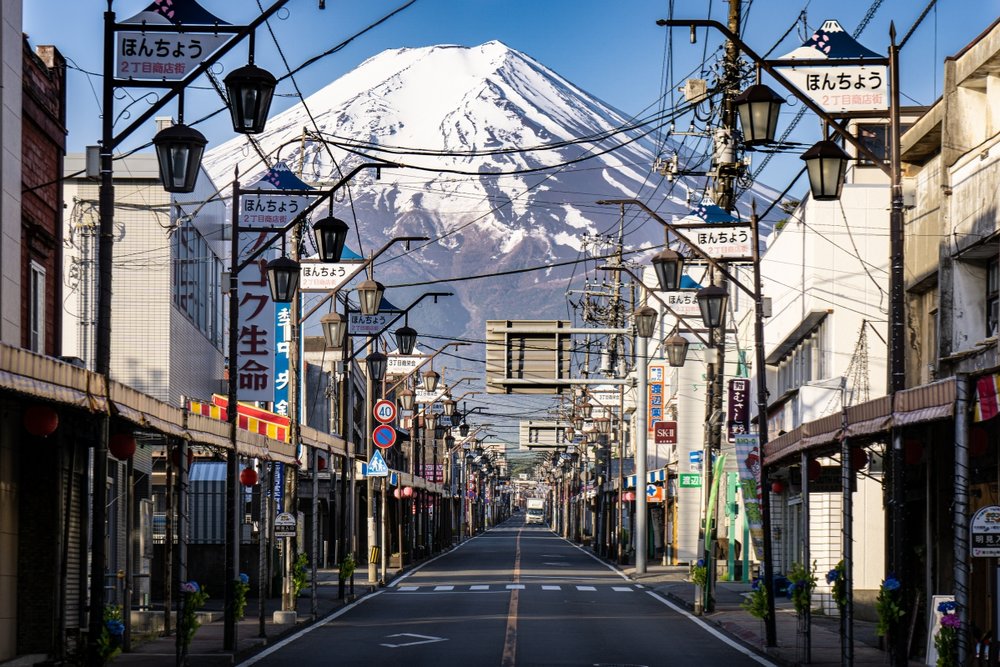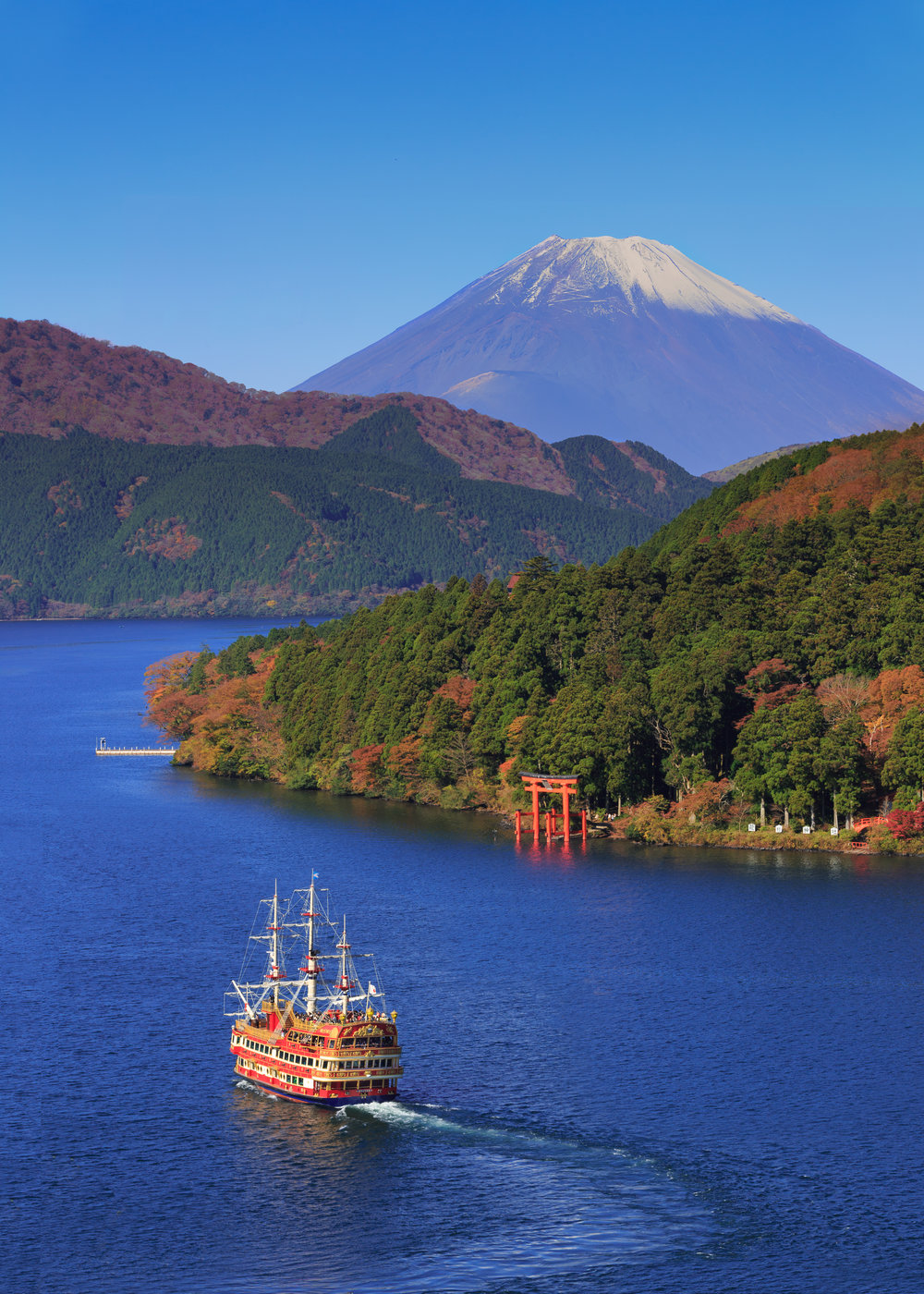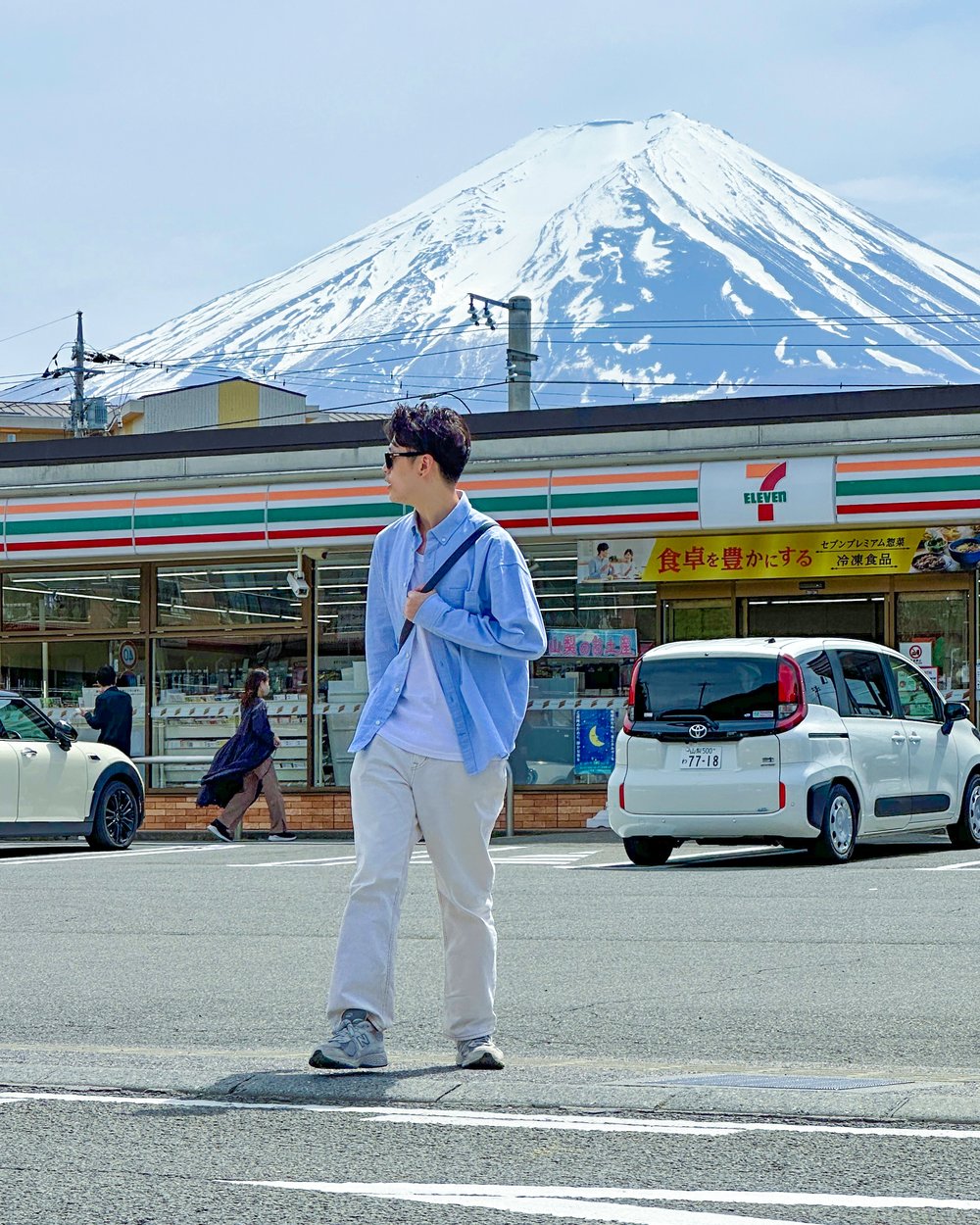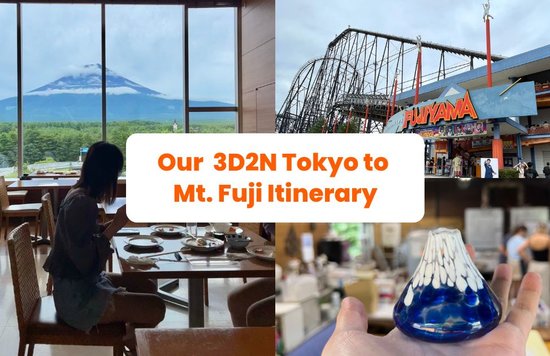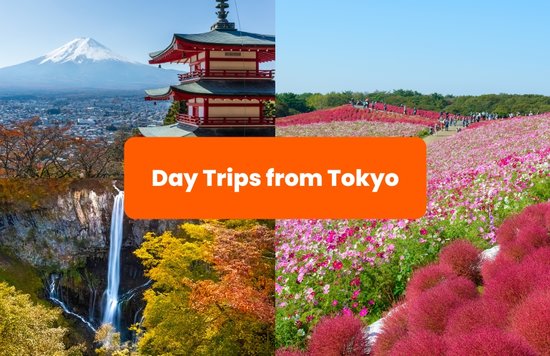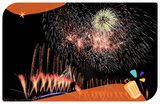15 Best Spots for Mount Fuji Views
Recent news about the Japanese town of Kawaguchiko wanting to block the popular Mount Fuji viewing spot at Lawson went international, and many tourists have taken to social media to mourn the loss of this popular Fuji Instagrammable spot.
After all, it's easy to see why, given that this almost perfectly-shaped volcano is Japan's most popular icon. Standing at 3,765 meters tall, Mount Fuji is also Japan’s tallest mountain! Helmed and worshiped as a sacred mountain, many travelers make this day trip from Tokyo to the surrounding regions of Hakone and the Fuji Five Lakes to catch it in all its glory.
During the summer, thousands will also climb Mount Fuji to catch the breathtaking sunrise right from the peak.
If you're not so adventurous, don't worry. We are about to share the best places to spot this majestic beauty. From classic viewpoints to hidden gems, we've curated a list of places that promise breathtaking vistas of this natural wonder. Each location offers a unique perspective, allowing you to appreciate the beauty and serenity of this iconic peak.
To make your journey seamless, we've provided detailed instructions on how to reach Mount Fuji from Tokyo. Whether you prefer a scenic train ride, taking a road trip, or the convenience of the Fuji Excursion Limited Express train, we've got you covered. This guide ensures that your encounter with Mount Fuji is not only memorable but also hassle-free!
Best time to see Mount Fuji
Pray hard to the weather gods because you’ll need a beautiful clear day in order to spot this beauty. Generally, you’ll have the highest chance during early mornings and in winter (November to February). You may not be so lucky in summer (June to August) given the more rainy weather.
Apart from that, there is also the Fuji Shibazakura festival where the base of the mountain is covered with pink sakura! This festival happens from mid-April to May.
How to get to Mount Fuji from Tokyo
The two most popular areas to catch scenic views of Mount Fuji are the onsen town of Hakone, and also Kawaguchiko which is the gateway to the stunning Fuji Five Lakes region in Yamanashi. You can easily get to both Hakone and Kawaguchiko from Tokyo!
Getting from Tokyo to Hakone
Using the Hakone Free Pass, you can hop onto the Odakyu line train from Shinjuku Station in Tokyo. The journey typically takes more than 2 hours to Odawara Station before transferring to the Hakone Tozan Train which will bring you on a scenic ride through the mountains.
For the best view of Mount Fuji at Hakone, hop on the scenic cruise on Lake Ashi, which is also covered by the Hakone Free Pass. Many traditional ryokans and onsens at Hakone also offer a majestic view of Mount Fuji right from your room or hot spring.
Getting from Tokyo to Kawaguchiko
The most direct way of getting from Tokyo to Kawaguchiko is taking the new JR Fuji Excursion Limited Express train. In less than 2 hours, the Fuji Excursion train will take you directly from Tokyo's Shinjuku Station to Kawaguchiko Station, running through the JR Chuo Line and the Fujikyu Railway Line.
#KlookTip: If you have a Japan Rail Pass, you can book your Fuji Excursion train tickets with additional charges. This is due to the track that the Fuji Excursion train runs on being co-operated by JR East & the Fujikyu Railway Line.
Alternatively, you can also choose to purchase the Mt Fuji Pass, which gives you 1 to 3 days of access to the Fujikyu Railway (between Otsuki Station and Kawaguchiko Station), Fujikyu Bus, and many attractions around the Kawaguchiko area.
However, you'll still have to book your train tickets on the JR Chuo Line from Shinjuku Station to Otsuji Station, before hopping onto the Fujikyu Railway from Otsuki Station to Kawaguchiko Station.
Taking a Day Tour from Tokyo
Navigating Tokyo's busy public transport can be overwhelming, but worry not! Klook offers an array of fantastic day trips from Tokyo, providing a hassle-free solution for those seeking convenience and memorable experiences. Say goodbye to the complexities of researching transport passes and optimal viewing spots; Klook has meticulously curated day trips that cater to your preferences.
Whether you're an adventurer, a culture enthusiast, or someone who simply wants to unwind, Klook has tailored day trips to suit your interests. From exploring historical landmarks to immersing yourself in the natural beauty of surrounding areas, each trip is designed for maximum enjoyment.
Forget the stress of planning, let us take care of the itinerary and transport, leaving you to savor the journey. Expertly crafted itineraries, comfortable transportation, and knowledgeable guides await you, promising an enriching and stress-free adventure.
Let Klook be your travel companion, turning your day trips from Tokyo into unforgettable escapades. Explore with ease and indulge in the wonders that Japan has to offer, all without the hassle of navigating the intricate web of public transportation. Your perfect Tokyo day trip awaits!
Discover the latest travel deals and promotions
Select your country to unlock limited-time travel promos👇
Hello, I'm from Singapore 🇸🇬
Kamusta, I'm from the Philippines 🇵🇭
Hello, I'm from Malaysia 🇲🇾
G'Day, I'm from Australia 🇦🇺
Hello, I'm from the United States 🇺🇸
Namaste, I'm from India 🇮🇳
Hello, I'm from the United Kingdom 🇬🇧
Marhaba, I'm from the Middle East
Places with the Best Mount Fuji View
1. Lake Kawaguchi (Kawaguchiko)
The Fuji Goko (Fuji Five Lakes) are located on the northern side of Mount Fuji and include the Kawaguchiko, Motosuko, Saiko, Shojiko, and Yamanakako lakes. If you’ve seen a photo of the famous reflection shot of Fuji on the lake, this is probably the best place for you to replicate it.
The most famous of the lakes is Lake Kawaguchi and it’s probably the most accessible as well. The best place to get the panoramic views of Mt Fuji is from the north side of the lake.
Getting there: Hop onto the Red line of the Fujikyuko Sightseeing Bus and alight at the Kawaguchiko Museum of Art and the lake is a short walk away.
2. Lake Yamanaka (Lake Yamanakako)
Lake Yamanaka is the largest lake and offers stunning views of Mount Fuji from the northern shore. Also known as "Swan Lake", this is also the only lake where you can find resident swans gliding gracefully against the stunning Fuji backdrop.
We’d suggest renting a bike and cycling around the lake! You can rent a bicycle near the bus stop for approximately JPY1500-2000 for 4 hours.
Getting there: Take the Fujikko-Go F-line bus from Kawaguchiko Station to Yamanakako stop.
3. Lake Sai (Saiko)
Lake Sai offers a clear view of Fuji from the western shore and there are a couple of viewpoints that offer stunning views except you’ll need to hike to get there. The first is a 30-minute hike to Koyo-Dai, a lookout point between the lake and the Fuji Panorama Line.
You can even stop by the Narusawa Hyoketsu (Ice Cave) and Fugaku Fuketsu (Wind Cave) nearby, these are covered with your Mount Fuji Pass. There is also an onsen spa called the Fuji Yurari Hot Spring where you can soak in the hot springs with Mt Fuji in view!
Getting there: Take the Green line of the Fujikyuko Sightseeing Bus and get off at the Koyo-Dai Entrance stop.
4. Lake Shoji (Shojiko)
Lake Shoji is the smallest of the 5 lakes but shows what is one of the great views of Mt Fuji! Come at sunset and you’ll find a gathering of photographers seeking the perfect Fuji sunset shot. If you’re up for it, there is also a 4-hour return hike called the Panorama Dai. It starts from Lake Shoki and offers a full view of the lake and Fuji!
Getting there: Take the Fujikyu bus to Panorama Observatory stop for the Panorama Dai hike, and Kodaki Fuji View stops for the western shore with Fuji views.
5. Lake Motosu (Motosuko)
Lake Motosu is probably the least accessible of the lakes but definitely should not be missed. This is where you’ll find the famous 1000-yen bill viewpoint of Mount Fuji! The walk to this viewpoint will set you back 1 hour each way but we think it’s worth it for sure.
Getting there: Take the Fujikyu bus to the Kodaki Fuji View stop. The famed viewpoint is next to Motosu Central Lodge and Koan Campground on the northwestern side.
6. Mount Fuji 5th Station
Standing at 2,300 meters above sea level, this is probably the closest you can get to Mount Fuji without climbing. The Mount Fuji 5th Station is the halfway mark of Mt Fuji so you’ll only be able to see half of the mountain. You’ll catch sight of hikers on their way up to the peak and this is where they’ll stock up on supplies like snacks, water, and even oxygen.
Getting there: Hop onto the Fujikyu bus and alight at the Fuji Subaru Line 5th Station.
7. Mt Fuji Panorama Ropeway
For a more panoramic view of the mountain, hop onto the Mt Fuji Panorama Ropeway (Kachi Kachi Yama Ropeway) from the eastern shore of Lake Kawaguchiko. If you’re up for it, you can also choose to hike up instead of taking the ropeway, the return journey will take you slightly under 2 hours.
Once you’ve reached the observation deck, enjoy a well-deserved soft-serve ice cream with the view. You can also take a 2-hour hike to Mount Mitsutoge which offers you a different perspective of Mount Fuji.
Getting there: Take the Red line of the Fujikyuko Sightseeing Bus from Kawaguchiko to the “Pleasure Cruiser/Ropeway Entrance” stop.
8. Fuji Q Highland
Who can forget the Fuji Q Highland theme park, the only place in Japan where you can ride a roller coaster AND enjoy the views of Fuji at the same time? Home to the world’s steepest roller coaster the Takabisha and the fastest accelerating roller coasting the DoDonpa, this is not for the faint-hearted!
Just outside Fuji Q Highland is also the Fujiyama Tower which will give you a bird's eye view of the entire area. Every few minutes, the Fujiyama roller coaster will also roll by against the panoramic backdrop of Mount Fuji itself! If that isn't enough, you can slide down all 55m back to the ground!
Getting there: Hop onto the Fujikyu line and board the train for Fuji-Q Highland Station.
9. Chureito Pagoda
The second most iconic shot of Mt Fuji is probably this one with the Chureito Pagoda. This 5-story pagoda or shrine is best visited in the morning when you’ll catch Fuji in its full glory and you won’t have to fight with the mobs of people!
During Spring, you’ll even get photobombed by plenty of Cherry Blossoms!
Getting there: Catch a 10-minute train from Kawaguchiko to Shimo-Yoshida. The Pagoda is a 10-minute walk away
10. Tenku-no Torii
Nicknamed the "Torii gate in the sky," Tenku-no Torii is a relatively new addition to the stunning landscape around Mount Fuji. This picturesque spot offers a perfect frame for capturing Mount Fuji in all its glory.
Getting there: You can reach Tenku-no Torii by car (parking is limited) or with a roughly 30-minute hike from the closest Hotori no Hotel Ban bus stop, where you can catch the Fujikyuko Sightseeing Bus.
11. Fujisan Yumeno Ohashi Bridge
Often referred to as the "Dream Bridge" due to its name (Fujisan Yumeno Ohashi), this bridge offers a unique perspective on Mount Fuji. Located in Fuji city, Shizuoka prefecture, the bridge's design creates a dramatic scene with a clear view of Mount Fuji in the background, perfect for capturing unforgettable photos.
#KlookTip: Getting here via public transport isn't as convenient. We highly recommend you include it as a road trip stop or join a day tour that includes it as a stop!
12. Oshino Hakkai
Unlike the other locations, Oshino Hakkai isn't a single viewpoint, but rather a collection of eight ponds in a picturesque village. Nicknamed the "Eight Seas," Oshino Hakkai is renowned for its crystal-clear spring water fed by Mount Fuji's snowmelt. The traditional thatched-roof buildings, water wheels, and stunning views of Mount Fuji make it a picture-perfect destination.
Getting here: Several buses run from Kawaguchiko Station to Oshino Hakkai, with the journey taking around 30 minutes.
13. Honmachi Shopping Street
Nestled in the heart of Fujiyoshida City, Honmachi Shopping Street, also known as Fuji Michi ("Fuji Road"), offers a sight you won't find anywhere else. This traditional shopping arcade was made famous by Instagrammers because of its unique juxtaposition against Mount Fuji.
It isn't just a great place to soak up local charm and find unique souvenirs, but also a great place to catch a glimpse of the iconic mountain framed in an unexpected yet undeniably charming way.
#KlookTip: Taking the perfect photo here requires you to be patient due to its popularity and also traffic. Please be respectful to the locals as well as the local laws. A traffic warden may be present during peak hours, so do follow instructions, so that everyone can get their perfect shot safely!
14. Lake Ashi (Ashinoko)
The classic view of Mt Fuji with the orange Torii gates of the Hakone Shrine can be captured from Lake Ashi. Hop onto a pirate boat and sail around this stunning lake, which is included in the Hakone Free Pass. This crater lake is extremely popular with hikers due to the abundance of nature all around.
Getting there: Use your Hakone Free Pass and hop onto the Odakyu train at Shinjuku and alight at Lake Ashinoko.
15. At a Convenience Store
While the infamous "Mt. Fuji Lawson" photo spot may be a thing of the past, the charm of capturing a convenience store juxtaposed against Mount Fuji's majesty isn't lost. The beauty lies in the unexpected!
Many scenic backroads and hidden gems dot the area around Kawaguchiko. So ditch the strict itineraries, rent a car, and embrace a leisurely drive. Keep your eyes peeled for convenience stores with clear views of the mountain in the background. You might just stumble upon the perfect spot for a unique and personal photo capturing the essence of a Japanese road trip with Mount Fuji as your unforgettable backdrop!
🇯🇵 Tokyo Travel Essentials 🇯🇵
Top things to do in Tokyo
- Day trips: Mt Fuji Instagrammable Spots | Mt Fuji and Hakone
- Visiting multiple attractions in Tokyo? Get the Klook Pass Greater Tokyo and enjoy up to 48% savings!
Getting around
Stay connected with our Japan 4G eSIM and find the best places to stay in Tokyo — plus exclusive hotel promos and bundle deals!
Related Articles
What is Klook?
Klook is a world-leading travel and experiences platform, with over half a million offerings in over 2,700 destinations! Browse our growing collection of travel activities and services in 15 languages, and complete bookings seamlessly with 40 currencies and over 40 payment methods.
We're here to bring the world closer together through experiences. Whether it's something new in your neighborhood or an adventure abroad, with Klook you're always connected to a world of things to do and places to see.

